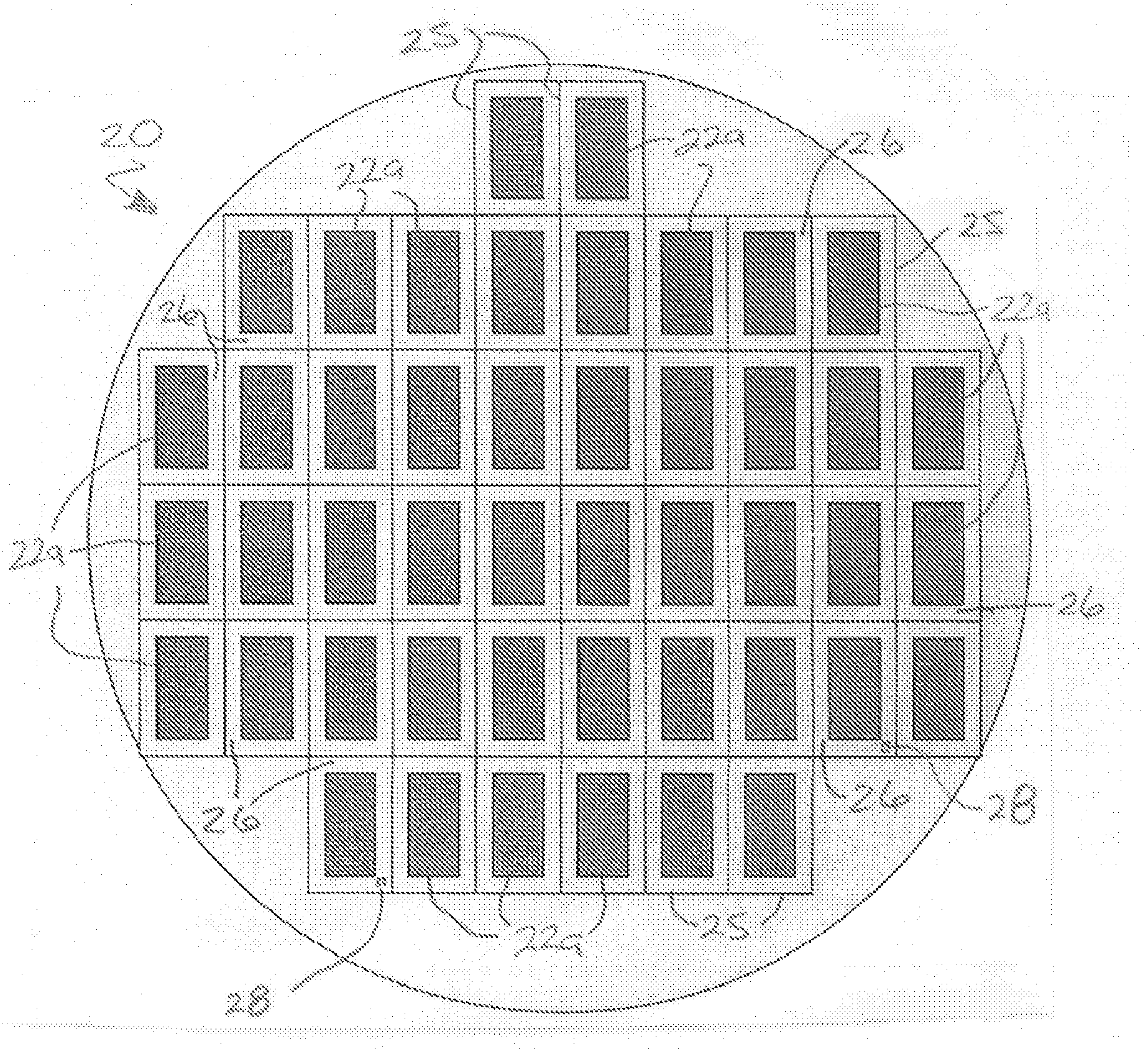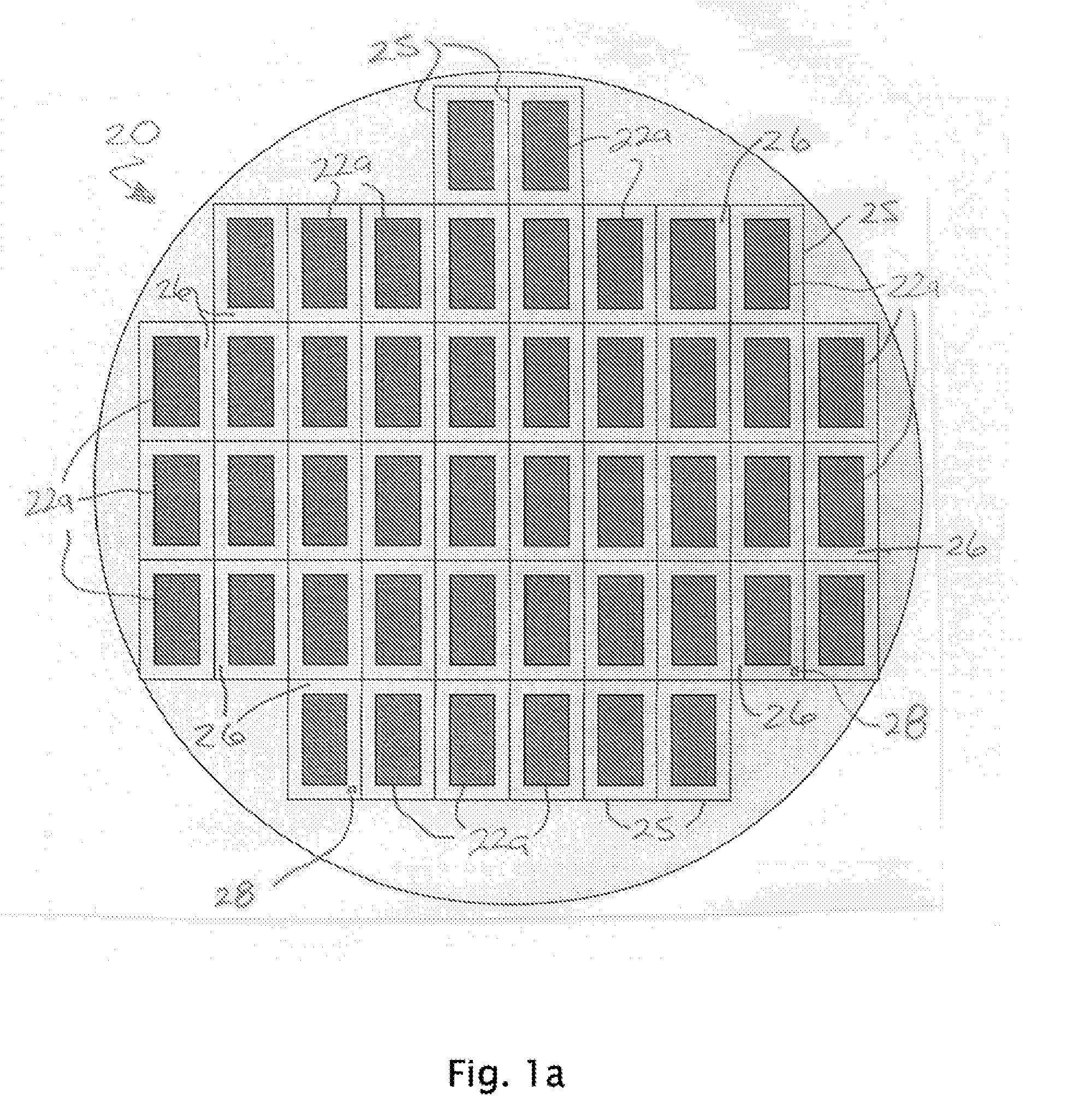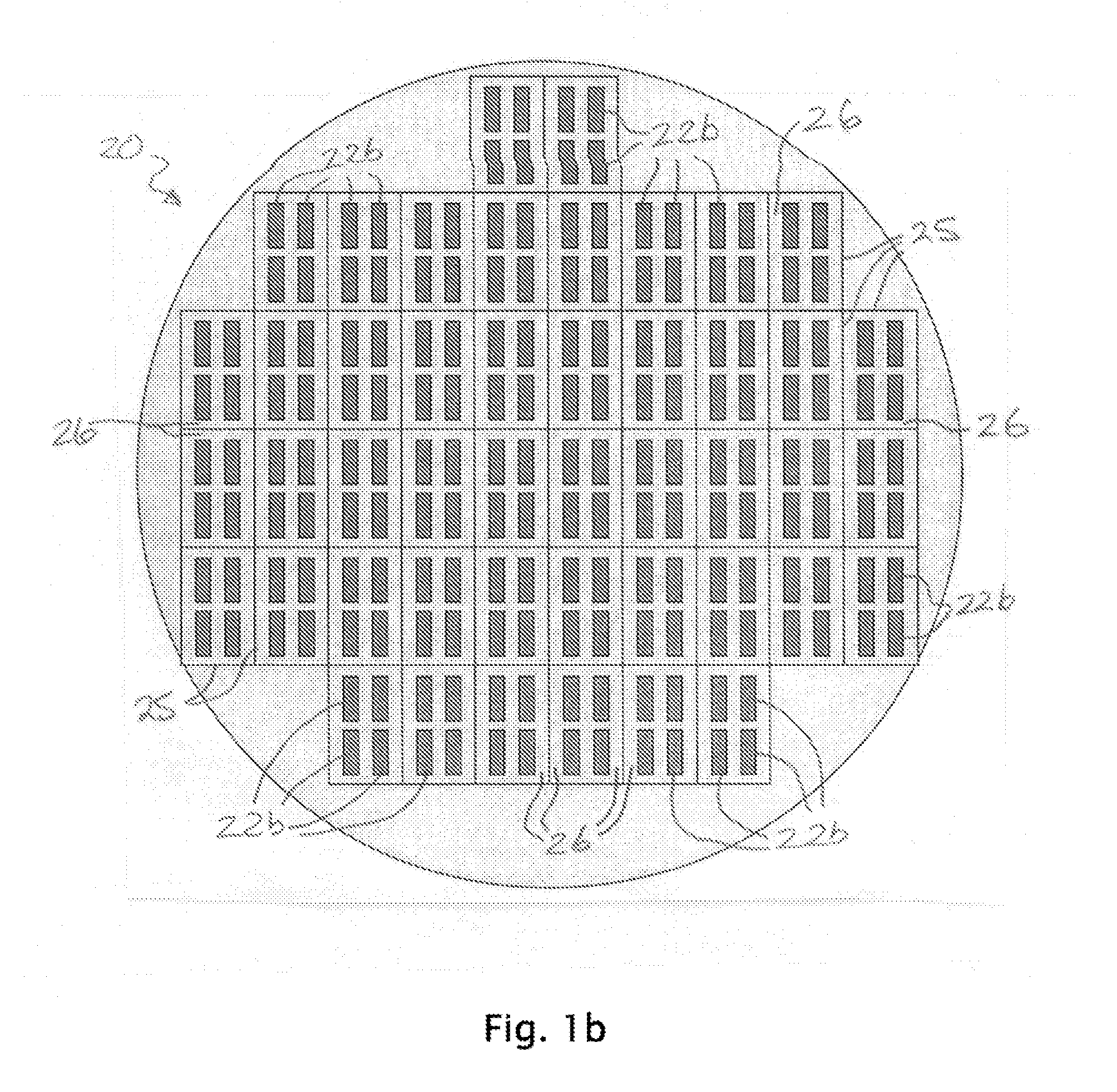Variable fill and cheese for mitigation of beol topography
a topography and variable technology, applied in the field of semiconductor device lithography production, can solve the problems of severe topography differences in the beol and limited common process window across the entire field, and achieve the effect of reducing the size of the dummy featur
- Summary
- Abstract
- Description
- Claims
- Application Information
AI Technical Summary
Benefits of technology
Problems solved by technology
Method used
Image
Examples
Embodiment Construction
)
[0027]In describing the preferred embodiments of the present invention, reference will be made herein to FIGS. 1-13 of the drawings in which like numerals refer to like features of the invention.
[0028]The present invention varies the size and / or layout of so-called “fill” and “cheese” so as to mitigate local and field-scale pattern density variations. The term “fill” refers to the additions to the chiplet or kerf design of patterns (active or more typically non-active), such as metal vias, lines or other features. Non-active features are also referred to as dummy features. The term “cheese” refers to the portions of the design that replace removed portions of the active or non-active patterns that resist CMP, such as oxides, polymers or other dielectric materials more resistant to CMP than metals. By changing the size and / or layout of the fill and cheese, more uniform pattern densities can result across the entire field, which is known to mitigate pattern density variation-induced ...
PUM
 Login to View More
Login to View More Abstract
Description
Claims
Application Information
 Login to View More
Login to View More - R&D
- Intellectual Property
- Life Sciences
- Materials
- Tech Scout
- Unparalleled Data Quality
- Higher Quality Content
- 60% Fewer Hallucinations
Browse by: Latest US Patents, China's latest patents, Technical Efficacy Thesaurus, Application Domain, Technology Topic, Popular Technical Reports.
© 2025 PatSnap. All rights reserved.Legal|Privacy policy|Modern Slavery Act Transparency Statement|Sitemap|About US| Contact US: help@patsnap.com



